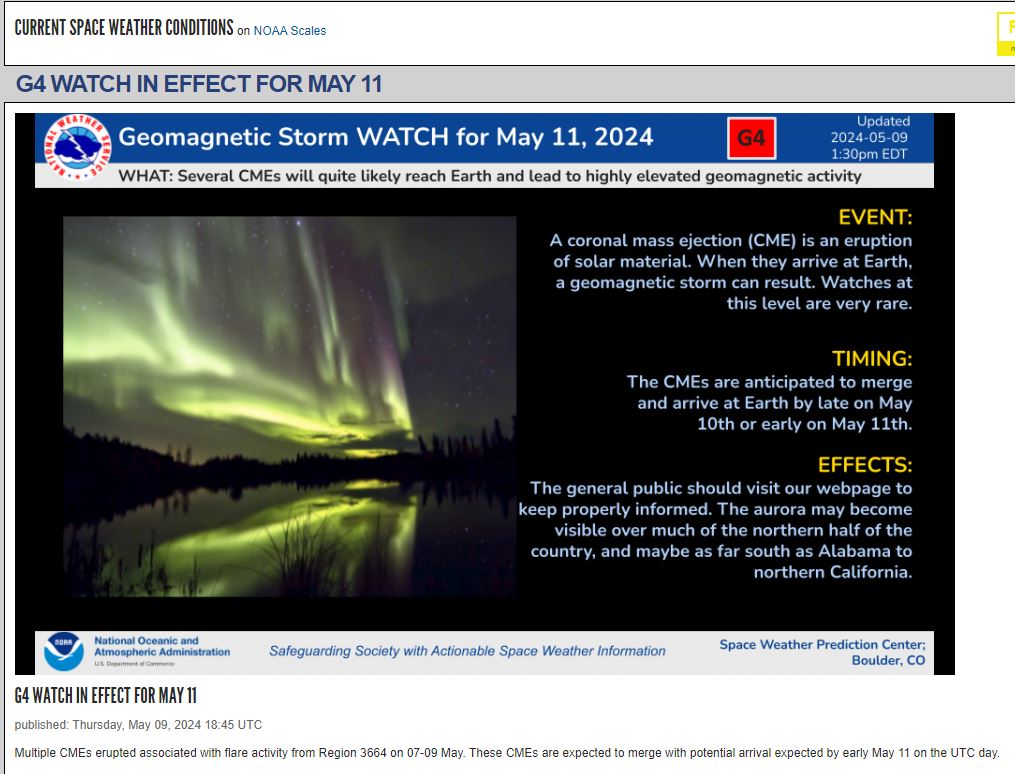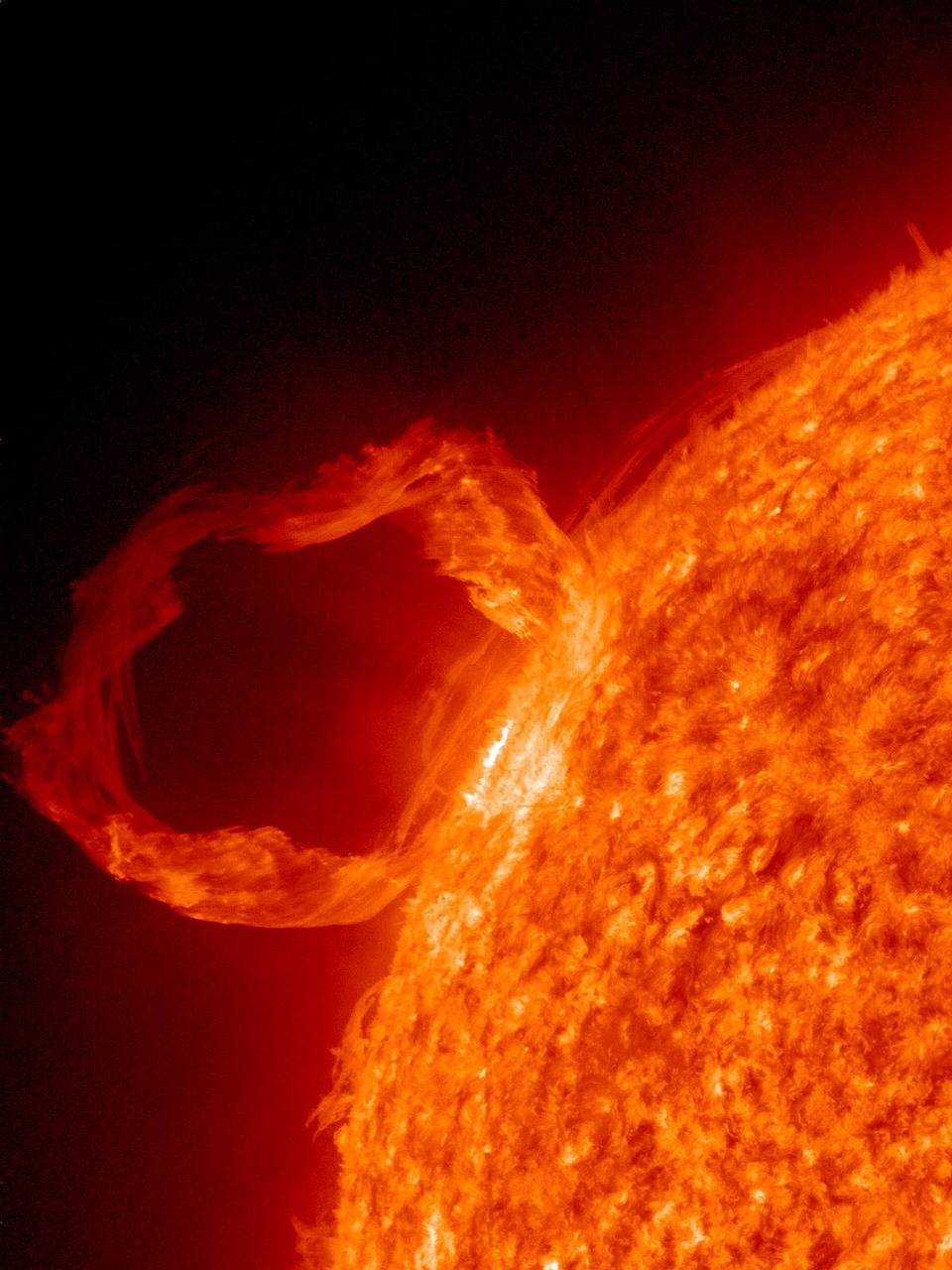After monitoring “large sunspot groups” and “several strong flares,” NOAA’s Space Weather Prediction Center issued a G4 Severe Geomagnetic Storm Watch for Friday, May 10, through Sunday, May 12.
A graphic accompanying the watch noted:

At least five earth-directed coronal mass ejections were observed and are projected to reach Earth as soon as midday Friday, May 10, 2024, and continue through Sunday, May 12, 2024. This event is considered rare
Over the past few days, several strong flares were observed, linked to a large and magnetically complex sunspot cluster (NOAA region 3664) that is 16 times the size of Earth.
In a media advisory, the agency explained that coronal mass ejections (CMEs) are explosions of plasma and magnetic fields from the sun’s corona that can cause geomagnetic storms when they are aimed at Earth.

Image by Nico Becker from Pixabay
Geomagnetic storms have the potential to disrupt infrastructure in near-Earth orbit and on the Earth’s surface, possibly impacting communications, the electric power grid, navigation, radio, and satellite operations. The Space Weather Prediction Center has informed operators of these systems so they can take preventive measures.
Geomagnetic storms may also trigger stunning auroras on Earth. A severe geomagnetic storm could allow auroras to be visible as far south as Alabama and Northern California.

While geomagnetic storms can cause significant disruptions to life on Earth, including damaging or shutting down parts of the electric grid, NOAA notes that most G5 storms (the most intense level) “do not lead to catastrophic damage to the electric grid.”
On average, the Earth experiences such storms around four times every 11-year solar cycle, meaning many large storms have hit the planet since the Carrington Storm without major impacts.
Nevertheless, preparation is key. The precautions are similar to those recommended for other natural disasters and can help mitigate potential disruptions caused by geomagnetic storms.






